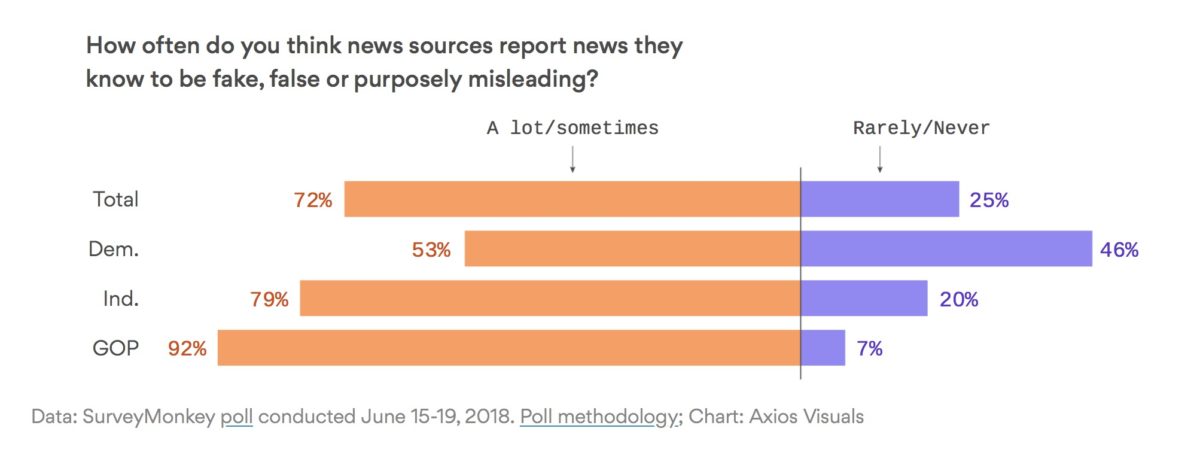Recent developments in separate cases against former Trump officials Paul Manafort and Mike Flynn have left many scratching their heads.
On Friday, Politico reported that the Associated Press may have tipped off the FBI to a storage locker that the bureau then raided, according to an FBI agent who gave an unexpected testimony at a federal court hearing in Alexandria, Virginia.
A meeting last year where Associated Press reporters discussed with federal officials the news outlet’s investigation of former Trump campaign chairman Paul Manafort’s finances may have led the FBI to a storage locker the bureau raided, an FBI agent testified Friday. –Politico
Congressional investigators have inquired into the April 2017 meeting between AP and officials from both the DOJ Criminal Division and the FBI.
Manafort’s attorneys have sought to suppress the materials obtained through the searches as part of a broader attempt to discredit the Mueller investigation.
In response to an earlier question about how the FBI became aware that Manafort had a secret storage locker used for all of his business-related files, FBI agent Jeff Pfeiffer said “Either through my investigative efforts or through a meeting that occurred with reporters of The Associated Press.”
Present at the meeting with the Associated Press was Mueller investigator Andrew Weissmann – who is also a top prosecutor in the Criminal Division’s Fraud section.
It was Weissman’s presence in the meeting with Associated Press reporters that first generated interest from congressional Republicans. In a January letter to Deputy Attorney General Rod Rosenstein, House Intelligence Committee Chairman Devin Nunes indicated he was interested in obtaining “records related to the details of an April 2017 meeting between DOJ Attorney Andrew Weissmann … and the media.” The disclosure of the meeting in Nunes’ letter led to speculation among Trump allies that Weissmann had aided the reporters’ stories. –Politico
AP’s director of media relations, Lauren Easton, confirmed that AP journalists met with DOJ officials “in an effort to get information on stories they were reporting, as reporters do,” and claimed that the journalists asked the DOJ about the storage locker but never identified its location.
Following the FBI’s meeting with AP, Manafort assistant Alex Trusko eventually helped federal officials obtain access to the locker and consented to its search. While Manafort’s attorneys have argued that Trusko lacked the authority to grant access, he was listed as the “occupant” on the locker’s lease, and he had a key to it.
Flynn gets another reprieve
Meanwhile, special counsel Mueller has asked for yet another delay in the sentencing of former national security adviser Michael Flynn, according to court documents filed on Friday – the third such request.
Mueller’s team asked for two more months before scheduling his sentencing – with a request to file another status report by August 24.
“Due to the status of the Special Counsel’s investigation, the parties do not believe that this matter is ready to be scheduled for a sentencing hearing at this time,” reads a joint status report filed on Friday in a D.C. federal court.
Flynn worked on the Trump campaign during the 2016 election and was briefly Trump’s national security adviser before being fired for misleading Mike Pence about his contacts with Russian officials. While an incoming national security director communicating with Russia would be absolutely expected – Flynn’s statements to White House officials and the FBI led to his firing and subsequent prosecution by the special counsel.
McCabe didn’t think they had a case
In May, an unredacted House Intel Committee report revealed that former Deputy FBI Director Andrew McCabe told Congressional investigators that the FBI had virtually no case against former National Security Advisor Mike Flynn, and “The two people who interviewed [Flynn] didn’t think he was lying[.]”
“[N]ot [a] great beginning of a false statement case.” McCabe told the Committee.
The same House Intel report revealed that James Comey contradicted himself in a Fox News interview when he denied telling lawmakers those agents thought Flynn was telling the truth, when in fact he did. Meanwhile, there has been an unconfirmed rumor that McCabe instructed agents to alter their “302” forms from the Flynn interview, effectively changing their written accounts.
Senate Judiciary Committee Chairman Chuck Grassley (R-IA) has been zeroing in on the Flynn interview – demanding the 302 forms, as well as a sit-down with Special Agent Joe Pientka – who Grassley revealed as the second FBI agent in the Flynn interview aside from Peter Strzok.
Grassley demanded a transcribed interview with Pientka – who would be able to testify as to whether or not McCabe had him alter his 302 form, which would send things nuclear.
Thus far, the DOJ has told Grassley to pound sand…
via RSS https://ift.tt/2KyLE96 Tyler Durden




































